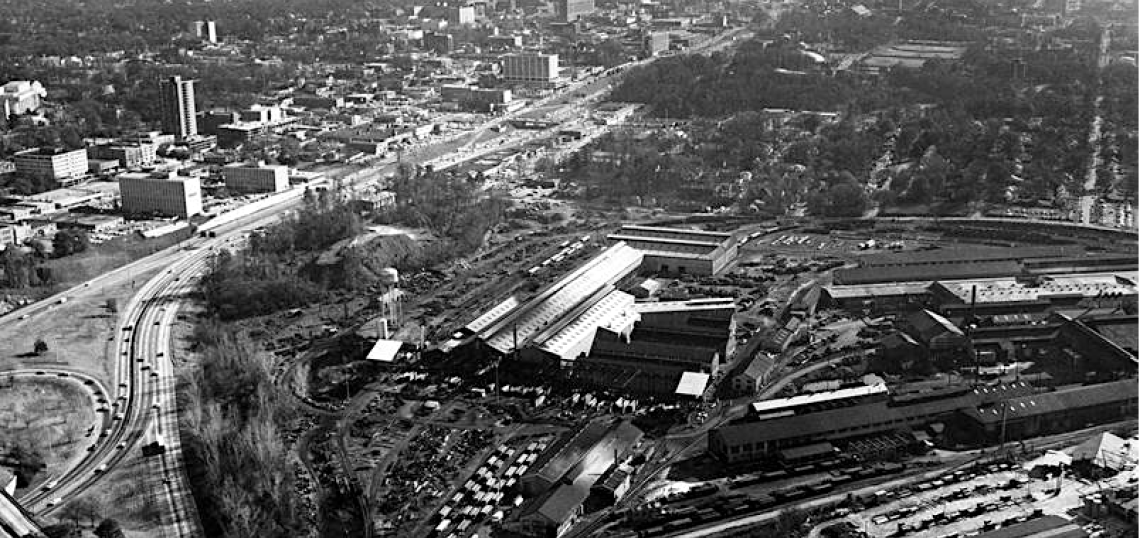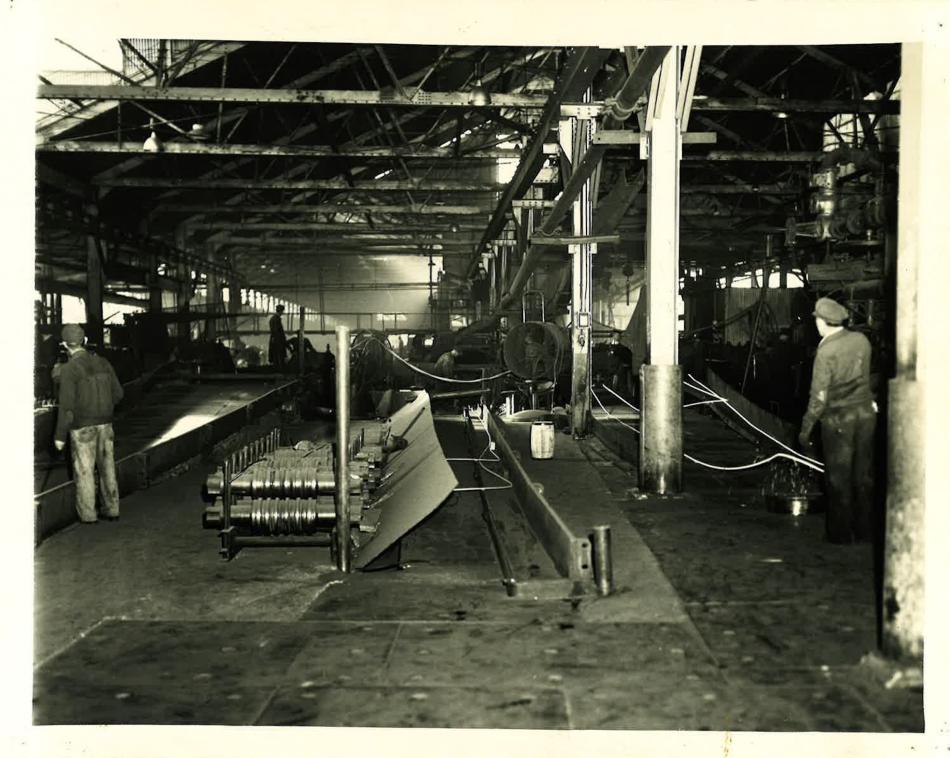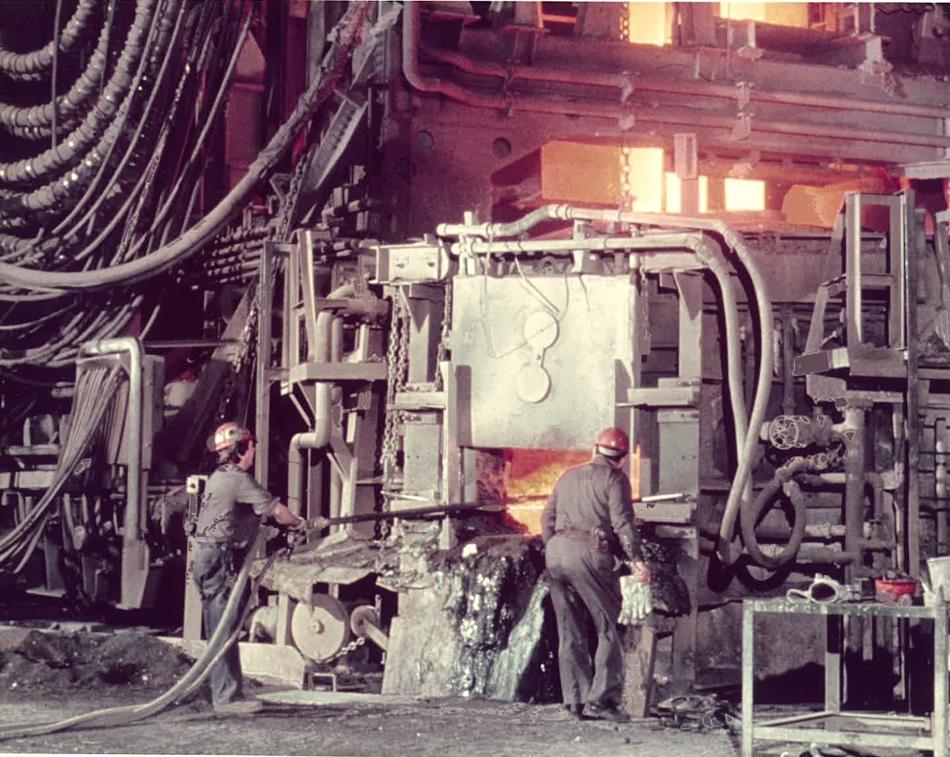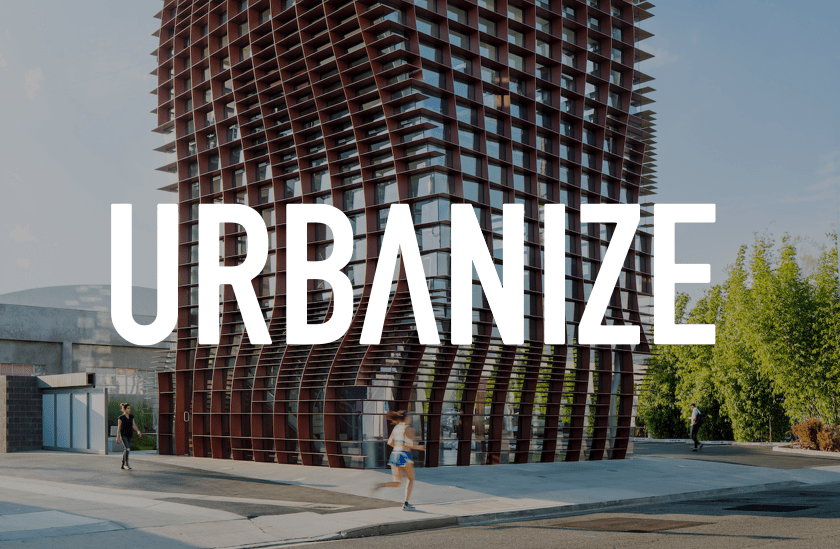When Vikram Mehra moved to Atlanta 25 years ago, he looked across the Connector freeway one day, spotted the last remnants of a sprawling steel mill, saw the beginnings of Midtown’s 17th Street bridge, and he knew that whatever was being built in the area would qualify as, in his words, “audacious.”
But like many new Atlantans, Mehra didn’t quite grasp the importance to the city—and region—the Atlantic Steel plant once held.
“For a certain generation, it was a very significant employment generator for them, and it drove community for them,” said Mehra, who is now senior managing director for Hines, the company that bought the mill’s eventual replacement, Atlantic Station, in 2015. “We don’t even think about that right now—steel mills operating in urban settings. In the 1990s [the mill] had just stopped functioning… it’s pretty crazy and surreal.”
Twenty years ago this month, Atlantic Station debuted its initial retail section, and thus marked the 138-acre district’s “official grand opening,” though the first residents had moved in two years before. To commemorate the occasion, Atlantic Station leaders are hosting a series of events—including a Roaring ’20s-themed celebration Oct. 25—but they’re also looking back, way back, to the industrial roots of what preceded the mixed-use, multi-tower behemoth.
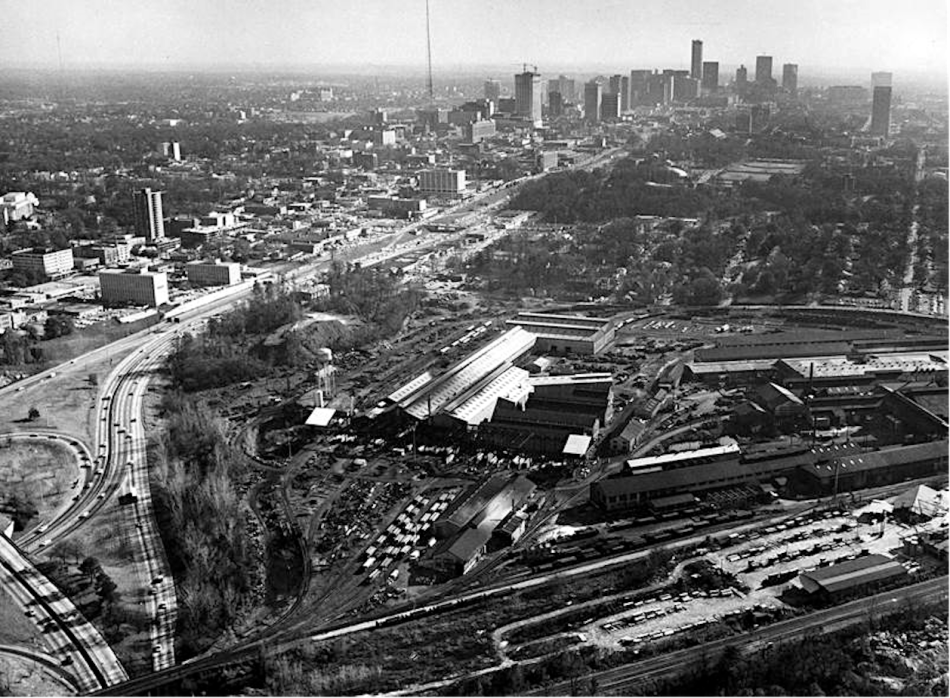 A circa-late 1970s look over the Atlantic Steel mill, with a comparatively low-rise Midtown at left and downtown Atlanta in the distance. Courtesy of Atlantic Station/Hines
A circa-late 1970s look over the Atlantic Steel mill, with a comparatively low-rise Midtown at left and downtown Atlanta in the distance. Courtesy of Atlantic Station/Hines
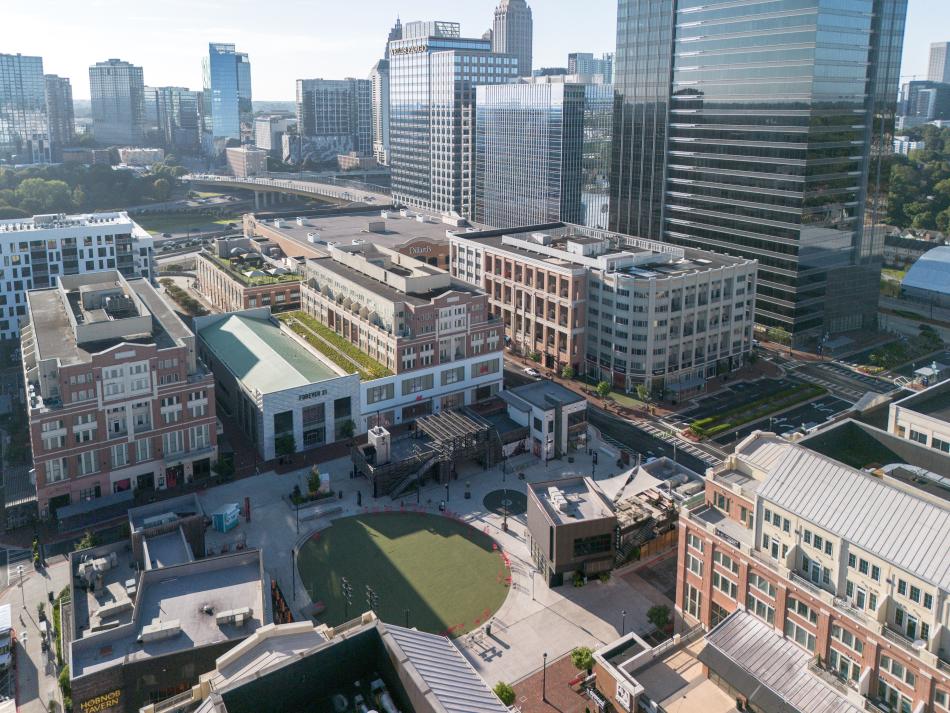 Now home to thousands, looking east over multi-tower Atlantic Station toward recent high-rise development in Midtown. Courtesy of Atlantic Station/Hines
Now home to thousands, looking east over multi-tower Atlantic Station toward recent high-rise development in Midtown. Courtesy of Atlantic Station/Hines
Hines plunged the archives and provided Urbanize Atlanta with photos and facts that help paint the picture of Atlantic Steel and its significance for the city, at the nexus of Midtown, Buckhead, and neighborhoods such as Loring Heights and Home Park.
Originally built as the Atlanta Steel Hoop Company in 1901 to make barrel hoops and cotton bale ties, the facility was reorganized as Atlantic Steel Company in 1915. It consisted of several utilitarian buildings and marked “a strategically located steel supplier … that was located throughout rural and urban areas,” according to David Y. Mitchell, Atlanta Preservation Center executive director. For nearly a century, the mill was integral to Atlanta’s industry growth and employment—nothing short of a social and economic institution.
According to Hines’ research, the heyday for Atlantic Steel fell squarely in the 1950s.
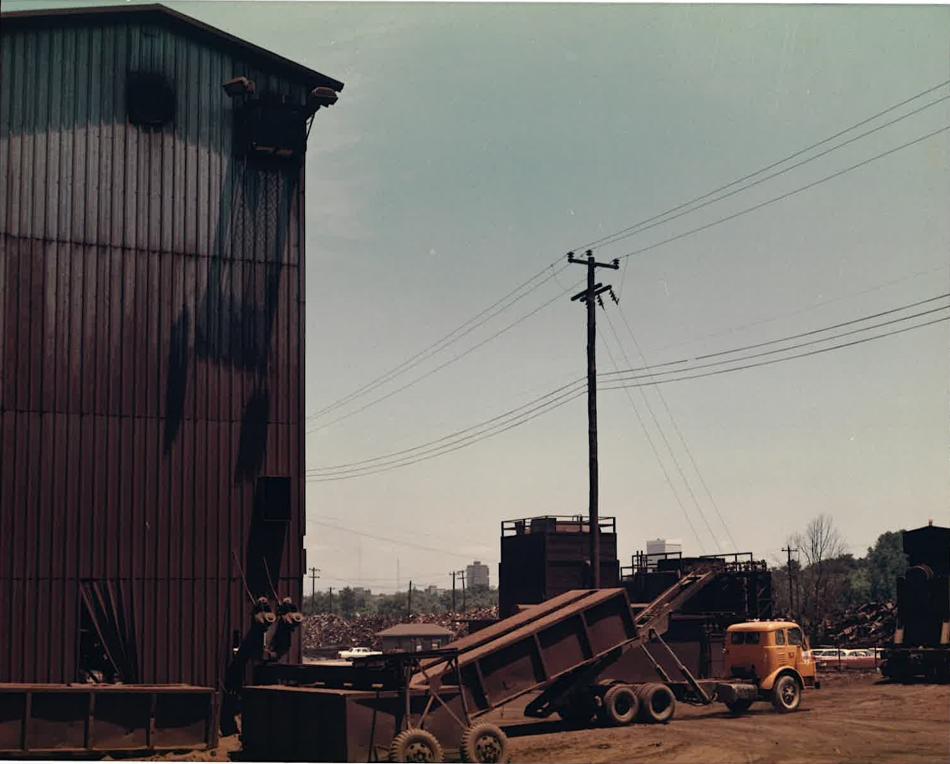 Ground-level view from Atlantic Steel toward Midtown and the northern blocks of downtown (photo undated). Courtesy of Atlantic Station/Hines
Ground-level view from Atlantic Steel toward Midtown and the northern blocks of downtown (photo undated). Courtesy of Atlantic Station/Hines
Back then, the mill employed roughly 2,300 workers (when Atlanta’s population was less than 350,000) and cranked out about 750,000 tons of steel each year. The more than 60 products from Atlantic Steel included wire, bands, nails, bars, barbed wire, and other steel items that fed into the agricultural and industrial needs of a growing South. At its peak, Atlantic Steel was Georgia Power Company’s largest customer, using 26 million kilowatt hours of electricity monthly. That’s enough to power a city of 80,000.
“Employment at the mill represented highly specialized, permanent jobs with good benefits, which was significant for Atlanta laborers and their families,” according to research provided by Hines representatives. “The closure of Atlantic Steel was a huge indicator of the decline of traditional manufacturing and Atlanta’s shift toward a post-industrial economy.”
The often-quoted rumor that Atlantic Station’s cleanup took a full decade is but an Atlanta urbanist wives’ tale, according to Hines.
The mill closed in 1998 and was bought by Jacoby Development for $76 million. Demolition and cleanup began in 1999—and within just four years, the first Atlantic Station residents were moving in. According to Mehra, of Hines management, the industrial cleanup marked the largest in the U.S. of its time.
“So not an ordinary task—it was pretty remarkable,” said Mehra. “It was almost like a switch overnight in some regards. It went from a massive, hulking steel mill site into this.”
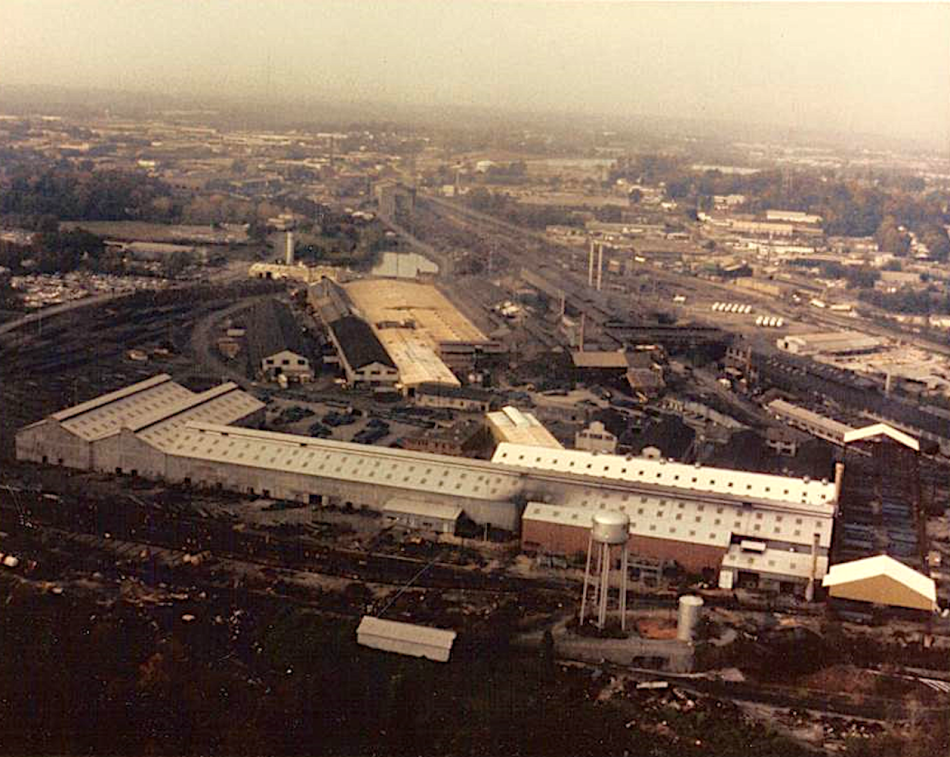 An undated photo overlooking Atlantic Steel's main industrial buildings and water tower. Courtesy of Atlantic Station/Hines
An undated photo overlooking Atlantic Steel's main industrial buildings and water tower. Courtesy of Atlantic Station/Hines
After 20 years of new development, 8-million-square-foot Atlantic Station is impressive, in terms of scale. Excluding townhomes, the district today counts 3,029 residential units. The first (and still perpetually busy) IKEA in the Southeast opened here. The district hosts about 250 festivals and events per year, and 11 million annual visitors, per Hines’ tabulations. Roughly 2 million square feet of offices, and a half-million square feet of retail not counting the big boxes have come online. Two hotels stand today, and another gap-filling lodge is in the offing that Mehra said should break ground soon. Atlantic Station famously has its own zip code.
“And there’s a 7,000-space parking garage where all that bad soil was excavated out,” said Mehra. “That is absolutely just mind-boggling when you think about it—that’s bigger than a lot of airports' [parking facilities].”
As it stands, Atlantic Station’s property is just 7.67 percent undeveloped, and what has been built is dotted with factory remnants—almost sculptural mill relics—of the industrial past. Mitchell, the APC head, said the district has evolved as an anchor of new growth in “an ever-evolving city of neighborhoods,” helping demonstrate “that the inclusion of historic preservation enhances redevelopment and gives significance to the place’s history.”
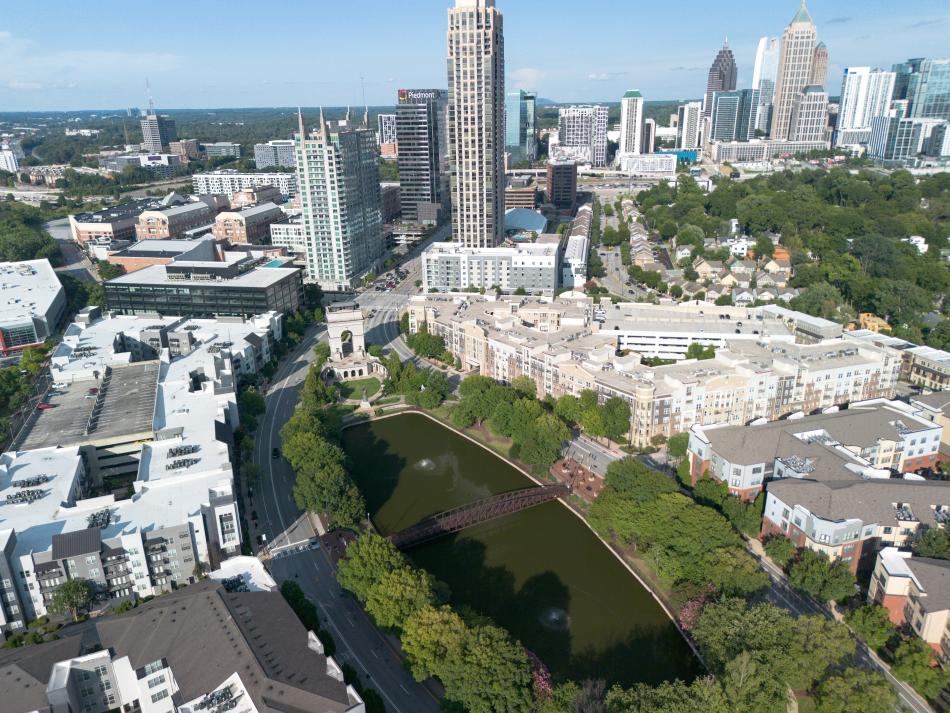 Atlantic Station's greenspaces today include the Millennium Gate Museum (at center), considered the second largest classical monument in the U.S. Courtesy of Atlantic Station/Hines
Atlantic Station's greenspaces today include the Millennium Gate Museum (at center), considered the second largest classical monument in the U.S. Courtesy of Atlantic Station/Hines
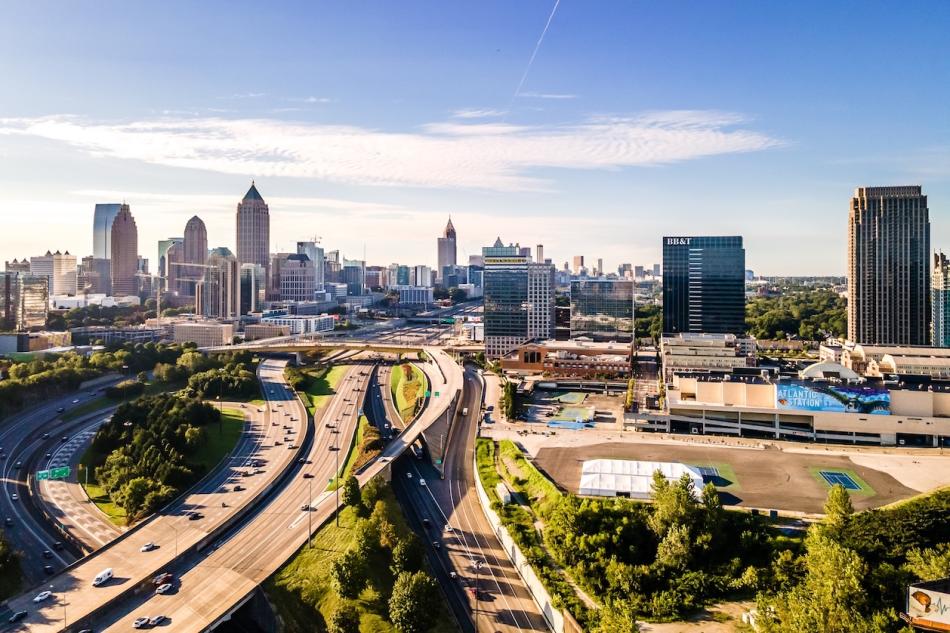 Looking south across Atlantic Station, Midtown, and the Connector expressway five years ago. The 17th Street bridge, a crucial link to Midtown, was opened in January 2004. ABV Agency/Thomas Turner; courtesy of Atlantic Station/Hines
Looking south across Atlantic Station, Midtown, and the Connector expressway five years ago. The 17th Street bridge, a crucial link to Midtown, was opened in January 2004. ABV Agency/Thomas Turner; courtesy of Atlantic Station/Hines
Today, Hines’ timber-built office building at Atlantic Station overlooks Foundry Park, which Mehra describes as a “wonderful remembrance of what this was” that will never be built over.
“This has become such a massive destination, a true neighborhood, a district,” said Mehra. “But I do think we should pause and appreciate the history.”
In the gallery above, find a trove of photos contrasting the industrial past with the mixed-use goliath Atlantic Station has become today.
...
Follow us on social media:
Twitter / Facebook/and now: Instagram
• Reader poll: Atlantic Station is about to turn 20. How's it doing? (Urbanize Atlanta)




